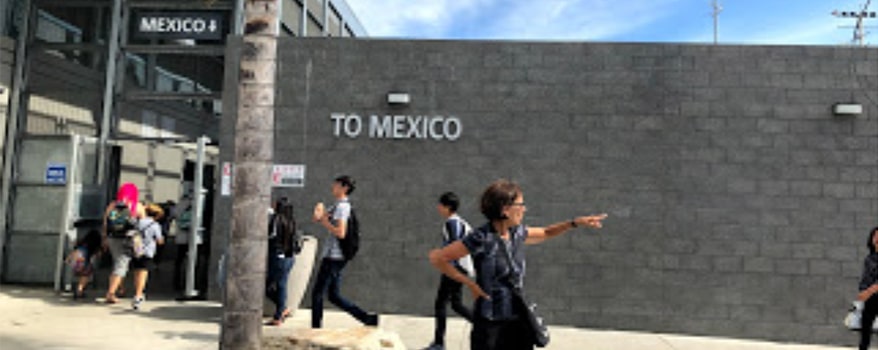
TIJUANA, MEXICO, JUST ACROSS THE U.S. BORDER, is
well known for its tourism and commerce. Today, it is also an
overcrowded bottleneck for asylum seekers, thanks to the Trump
administration’s ironically named Migrant Protection Protocols,
known more accurately as the “Remain in Mexico” policy.
Responding to a call for volunteer lawyers from Al Otro Lado,
a nonprofit that helps families from Honduras, Guatemala, Cuba,
Venezuela, and elsewhere who have been prevented from applying
for asylum in the United States, we had the opportunity to observe
conditions at the border firsthand. Because
they are not authorized to work, these
families live in shelters, depend on handouts
for food, have little or no access to health
services, and are unable to enroll their
children in school. They exist in limbo.
Many asylum seekers are families with
small children. They did not try to evade the
Border Patrol, but were put into detention.
After spending one or more days in hieleras (“ice boxes,” holding
cells maintained at very cold temperatures), the families were
returned to Mexico. They huddle in Tijuana, carrying their identity
documents, children’s birth certificates, letters from school
principals about gang threats at their elementary schools, and
news articles about gang murders of family members. These are
not stereotypical economic migrants attempting to slip undetected
across the border, nor are they gang members.
The current Trump administration policy, which deters, delays,
and discourages asylum seekers, defies U.S. laws that provide
for due process. At pre-dawn hours, entire families are bused to
Immigration Court proceedings in San Diego and returned to
Tijuana that same day. Almost all the asylum seekers we met had
been to San Diego Immigration Court at least once, and were
destined to return multiple times—in nearly every case without
a lawyer and forced to articulate their claims through randomly
assigned interpreters.
A typical case may involve four or more visits to Immigration
Court, each separated by weeks or months. After multiple trips,
which involve formal notice of the charge that the asylum seeker
has attempted to enter the United States without prior approval,
a formal request for asylum, and submission of evidence that
supports the application, the immigration judge finally schedules
a court hearing on the merits of the asylum claim. Not until
the fourth journey, on average, will the asylum seekers be able
to testify—usually pro se—and the judge begin to review and
assess the evidence. Meanwhile, the asylum seekers—adults and
children—languish in Mexico. This dilatory pace ensures that many
will give up and leave.
Noncitizens in Immigration Court proceedings do not have the
right—as do criminal defendants—to appointed counsel, but they
do have the right to be represented by an attorney if they can find
one. The Remain in Mexico policy undercuts this legally guaranteed
right to the assistance of counsel, because
forcing asylum seekers to remain in
Mexico effectively ensures they will never
find an attorney. The Immigration Court,
required to provide information to indigent
individuals on sources of free or low-cost
legal assistance, distributes a standard list
of California nonprofit legal organizations.
These organizations and pro bono lawyers,
however, do not have the capacity to handle the volume of asylum
seekers or the ability to properly prepare the applications. Even
more fundamentally, the asylum seekers cannot cross the border to
consult with U.S.-trained attorneys who might be able to help them.
Al Otro Lado tries to fill this gap with “know-your-rights”
presentations in Tijuana, referrals to social services, document
translations and—once a month—a volunteer legal clinic where
lawyers who can make their way to Mexico try to help asylum
seekers fill out applications. But Al Otro Lado cannot provide
direct representation to the flood of people essentially blockaded
from U.S. legal assistance. And legal representation matters:
studies show that 60% of those represented by a lawyer in
Immigration Court are successful, compared to 17% of those who
are unrepresented.
Although we cannot return to Tijuana every month, we are
committed to making a contribution. We encourage law students
to do the same. Our prior work with the New York Immigrant
Representation Study has increased legal representation of
immigrants in New York and has proven the enormous benefit
that legal assistance can provide.
—by Stacy Caplow and Maryellen Fullerton
Stacy Caplow is associate dean of experiential education, overseeing all aspects of clinical and experiential education and is codirector of the Safe Harbor Project. Maryellen Fullerton is Suzanne J. and Norman Miles Professor of Law and former interim dean of Brooklyn Law School. Both are experts in asylum and refugee law.